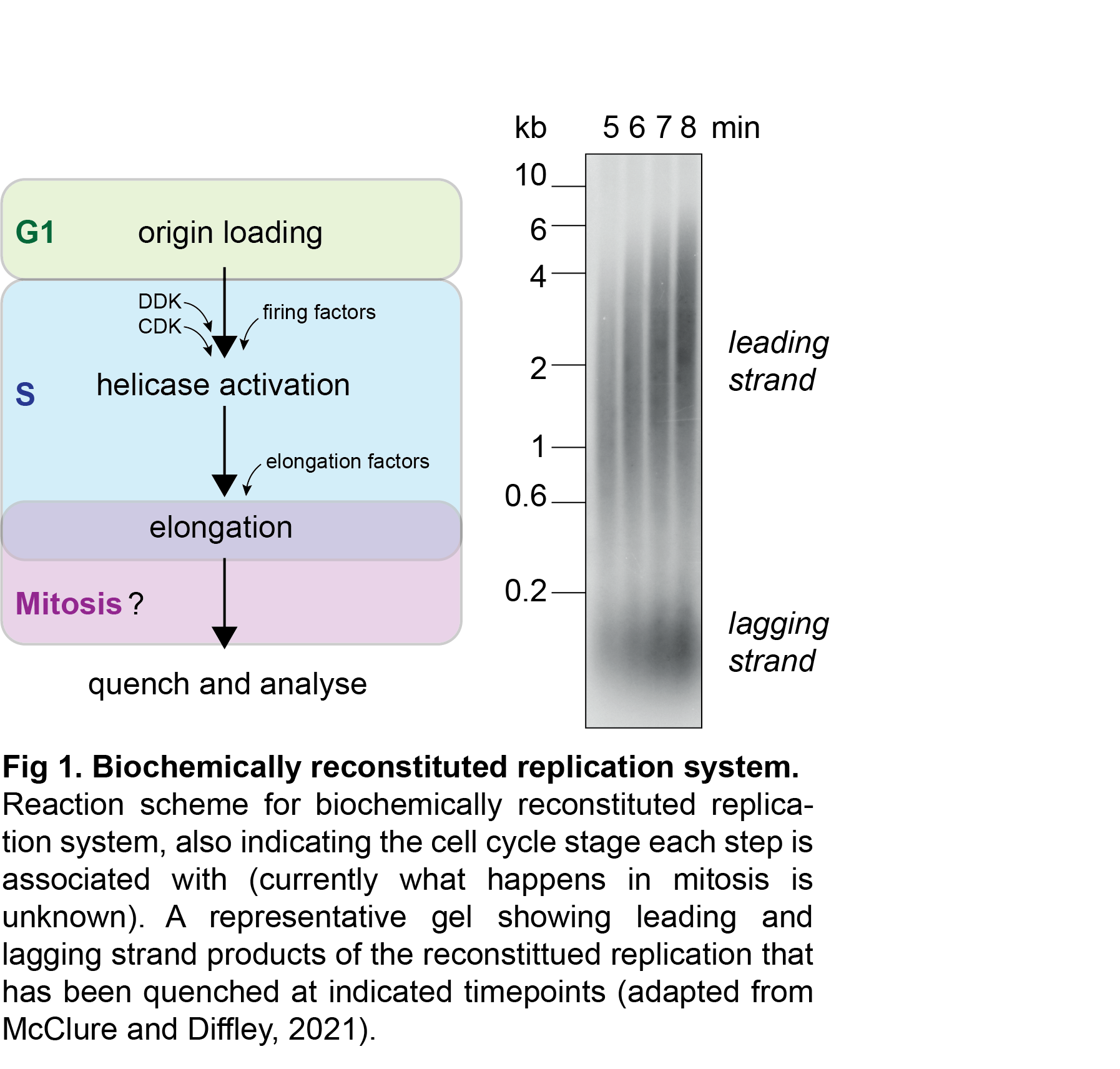Research
How do cells finish genome replication?
Each time a cell divides, it has to replicate all of its DNA. In human cells, this is about 6.4 billion base pairs! Our textbooks have taught us that this takes place in the S phase of the cell cycle, and then during Mitosis, a cell splits into two cells, each with a full genome. But it turns out that cells can and frequently do synthesize DNA during Mitosis. How do cells finish replicating their genomes during Mitosis?
What does DNA synthesis "look" like during Mitosis?
Mitosis is a very different environment than S phase. How does this impact the DNA replication machinery? How does this impact the structure of the DNA being replicated? And what is the outcome - how do cells make sure their genomes are faithfully duplicated with this mitotic-style replication?
We use the versatile and powerful biochemical reconstitution of DNA replication as our main tool, and we complement it with the classic power of yeast genetics. These two approaches inform one another and help us think about both fine mechanistic details as well as integrating our ideas in a physiological context.
Understanding how mitotic DNA synthesis works in a biochemical reaction and in yeast cells is really cool! But also, these mechanistic insights create a framework so that we can ask the right questions in mammalian cells, cancer cells, and humans. DNA replication is a highly conserved process, and many of the genes involved in DNA replication are misregulated in tumors. Therefore, this work can also help us understand what goes wrong in cancer cells and inform treatments.



